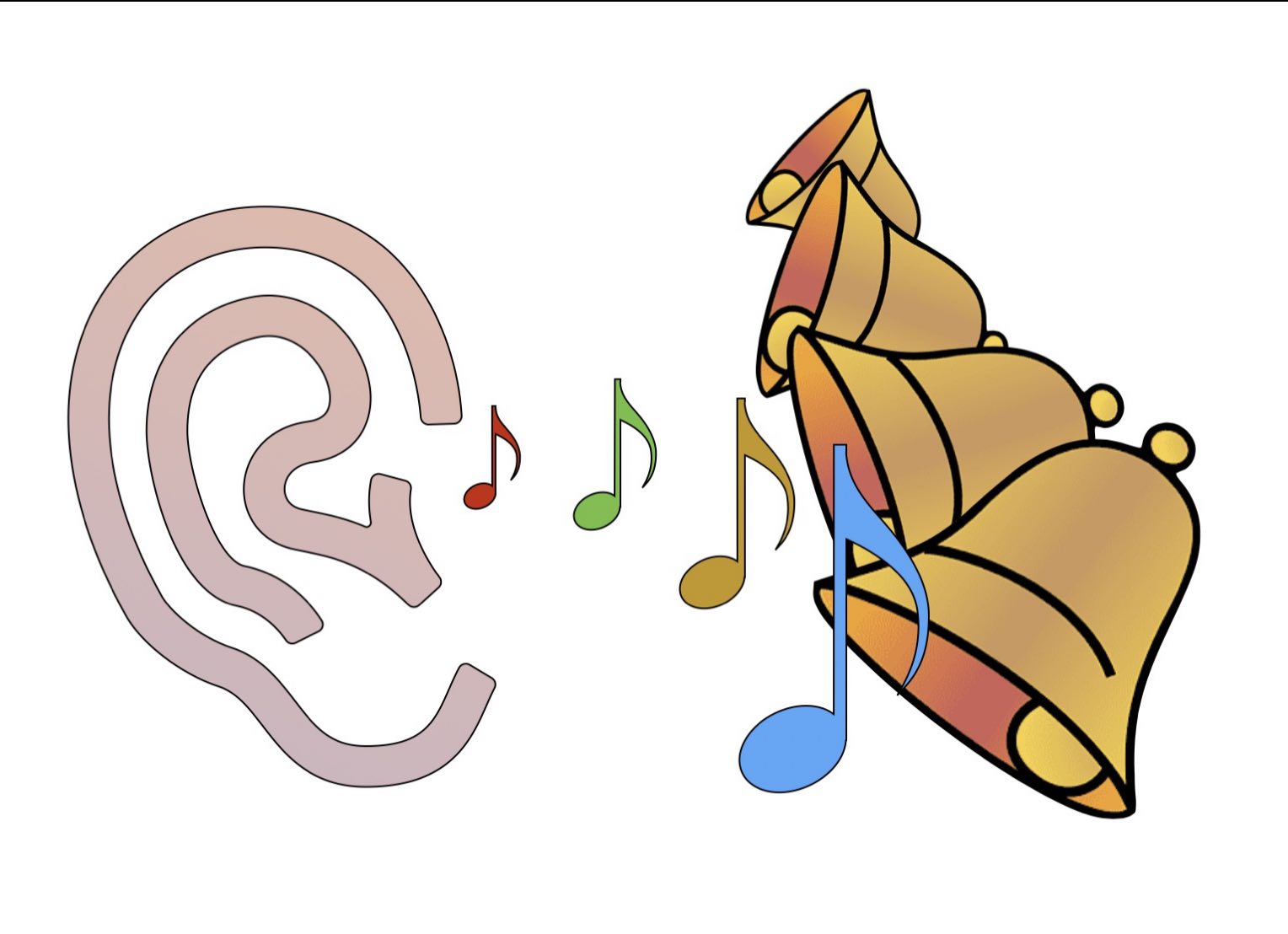A big thank you to those who have reported faults. We have investigated all those up to and including those reported on 22nd Oct. All have been corrected, including the half page which had been completely missed and was still awaiting content to be correctly allocated!
Our apologies for the faults, but with more than 8000 links and growing, things were bound to get missed! Most of the errors were typos or someone misreading the notes! We will try harder in the future!
To get you started...
All about Striking...
Find out about the relationship between what we see, what we do, and what we hear.
Discover why size matters for ringers.
Learn about what makes an odd-struck bell.
Investigate why the rhythm method works for ringers who want to stay out of trouble!
Learning to Listen
Hearing the bells...?
In this level, we focus on striking. The bells ring rounds and you have to choose which bell is striking early… It includes lots of clips to listen to and judge… and includes 6, 8 and 10-bell versions too!
Intervals
When we listen to one bell and another there will be a pitch gap… one will be higher or lower pitched than the other. How do we measure and describe that and what do the different pitch gaps sound like….
Mind the Gap!
Two simple sets of games where the gap in pitch its important…
You listen to 2 bells and say which has the higher pitch, then to 3 bells and say whether the first or second pair have a wider gap between.
Which Bell Set?
We don’t have to ring on a major scale… even in a six bell tower there will be options.
Explore the world of modes and scales and learn to identify the different types
All about striking...
Striking Rounds...
In these games, you not only need to say who is not striking their bell correctly… you need to say whether it is at hand stroke or backstroke and early or late…
Striking Call Changes...
If you can identify striking issues with bells ringing rounds… what about problems in call changes?
Striking Methods...
If you managed to work out which bell was mis-striking in call changes… can you do it for method ringing?
Not striking - just listening...
How Many Bells?
Working out how many bells were ringing in rounds was relatively easy… so can you do it for call changes and methods?
Where's the treble?
The treble is the easiest bell to hear as it has the highest pitch. Listen to the clips and decide which place the treble is in…
Who's leading?
No striking to worry about with this game… this is about the pitch of the bells you hear… So can you tell the two from the three?
What order..?
'I got Rhythm'...
Just One Bell..!
We ring by rhythm… ringing slower when hunting up and quicker when hunting down. In this game, you listen to one bell ringing Plain Hunt (with the others removed) and have to identify which place bell it is..
……do you know all your starts?

